List of available Antibiotics

Welcome to the site where you will be offered a list of antibiotics to choose from. To buy any drug, you need to go to the pharmacy's website and make an order. Good discounts fast delivery for all customers. Have a nice shopping experience and be healthy!

Amoxil is a antibiotic which is prescribed for infections of the respiratory system, infections of the genitourinary system and digestive tract, as well as for infections of the skin, soft tissues.

Ampicillin is a penicillin-type antibiotic used systemically to treat infections. It produces a broad antibacterial effect, affecting gram-positive and gram-negative bacterial microorganisms.
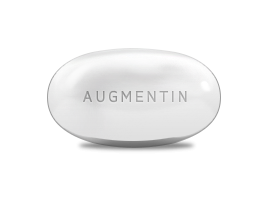
Augmentin is used to treat many different infections caused by bacteria, such as sinusitis, pneumonia, ear infections, bronchitis, urinary tract infections, and infections of the skin.

Bactrim is used to treat ear infections, urinary tract infections, bronchitis, traveler's diarrhea, and Pneumocystis carinii pneumonia.
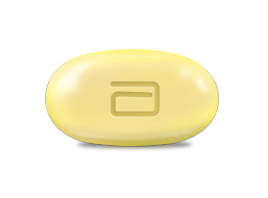
Biaxin is used to treat many different types of bacterial infections affecting the skin and respiratory system. It is also used together with other medicines to treat stomach ulcers caused by Helicobacter pylori.

Cefadroxil is an antibacterial agent that demonstrates high efficacy against Gram-positive and Gram-negative microorganisms.
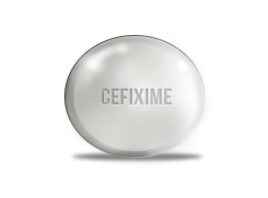
Cefixime use in the treatment of infectious diseases that are caused by the microflora sensitive to Cefixime. The drug is used in the treatment of inflammatory and infectious diseases.
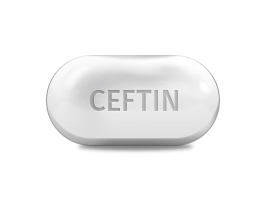
Ceftin this is an antibiotic - cephalosporin of the second generation. It has a bactericidal effect, which is realized by inhibiting the synthesis of bacterial cell walls.
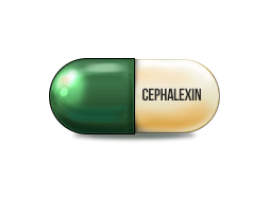
Cephalexin is used to treat infections caused by bacteria, including upper respiratory infections, ear infections, skin infections, and urinary tract infections.
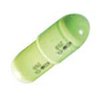
Chloramphenicol is used for treating serious infections caused by certain bacteria. Chloramphenicol is an antibiotic. It works by killing or slowing the growth of sensitive bacteria.
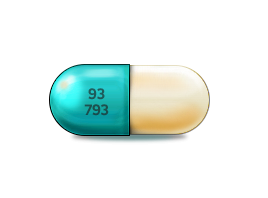
Chloromycetin is not prescribed to patients with individual intolerance to chloramphenicol, as well as fungal skin lesions, psoriasis, eczema, and inhibition of hematopoietic function.
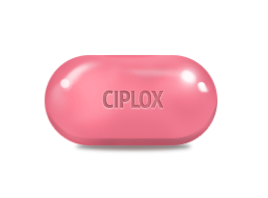
Ciplox is used to treat different types of bacterial infections. It may also be used to prevent or slow anthrax after exposure.

Cipro is used to treat different types of bacterial infections. It may also be used to prevent or slow anthrax after exposure.

Cleocin drug that has an antimicrobial effect on particularly resistant microorganisms. Cleocin antibiotic for systemic use.

Doxycycline is a widely used antibiotic of tetracycline. It is prescribed adults for the treatment of severe microbal diseases on the west market. It has a strong action, and therefore it is not taken by children.
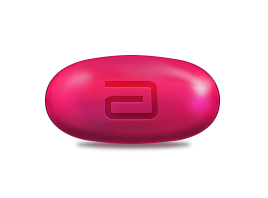
Erythromycin is used for treating infections caused by certain bacteria. Erythromycin is a macrolide antibiotic.

Ethionamide is used to treat tuberculosis (TB). Ethionamide is an antibiotic. It prevents the growth of bacteria in your body.
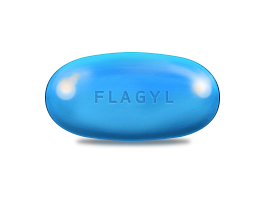
Flagyl is used for treating certain bacterial infections of the vagina (bacterial vaginosis).
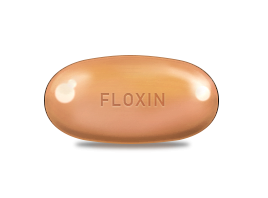
Floxin is used to treat bacterial infections that cause bronchitis, pneumonia, chlamydia, gonorrhea, skin infections, urinary tract infections, and infections of the prostate.
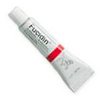
Fucidin cream is used to treat skin infections such as impetigo, infected eczema or infected wounds or cuts. It works by killing the organisms that have caused the infection.

Keflex is used to treat infections caused by bacteria, including upper respiratory infections, ear infections, skin infections, and urinary tract infections.

Keftab is used for treating certain bacterial infections. Keftab is a cephalosporin antibiotic. It works by interfering with the bacteria's cell wall formation.
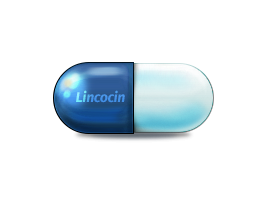
Lincocin is used for treating serious infections caused by certain bacteria. Lincocin is a lincomycin antibiotic. It works by stopping the production of essential proteins needed by certain bacteria to survive.
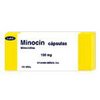
Minocin is used to treat many different bacterial infections, such as urinary tract infections, severe acne, gonorrhea, tick fever, chlamydia, and others.
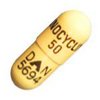
Minocycline is used to treat many types of different bacterial infections, such as urinary tract infections, severe acne, gonorrhea, tick fever, chlamydia, and others.

Minomycin is used to treat acne, which is resistant to other antibiotics. It is also used to treat various other infections.

Myambutol is used for treating tuberculosis (TB) infections of the lung along with other medicines. Myambutol is an antibacterial agent. It works by stopping the growth of TB cells, which results in cell death.
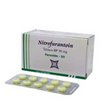
Nitrofurantoin is used for treating and preventing urinary tract infections caused by certain bacteria. Nitrofurantoin is an antibiotic for specific use in the urinary tract. It works by killing sensitive bacteria.
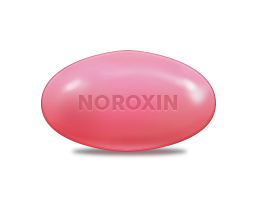
Noroxin is used to treat bacterial infections of the prostate and urinary tract. Noroxin also treats gonorrhea.

Omnicef is used to treat many different types of infections caused by bacteria, such as acute flare-ups of chronic bronchitis, middle ear infections, throat infections, pneumonia and skin infections.

Roxithromycin is used for treating several different infections, including some STDs, upper and asthma, gum infections like gingivitis, and bacterial infections associated with stomach and intestinal ulcers.
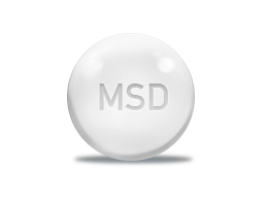
Stromectol is used for treating infections caused by certain parasites. Stromectol is an anthelmintic. It works by killing sensitive parasites.

Sumycin is used to treat many different bacterial infections, such as urinary tract infections, acne, gonorrhea, chlamydia, and others.
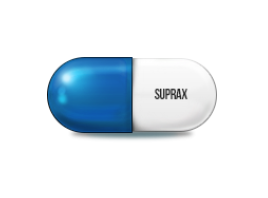
Suprax is used for treating infections caused by certain bacteria. Suprax is a cephalosporin antibiotic. It works by killing sensitive bacteria.
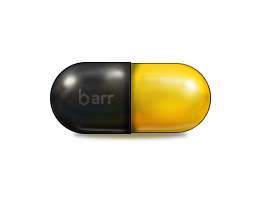
Tetracycline is used for treating infections caused by certain bacteria. Tetracycline is a tetracycline antibiotic.

Terramycin is used for treating infections caused by certain bacteria. Terramycin is a tetracycline antibiotic.
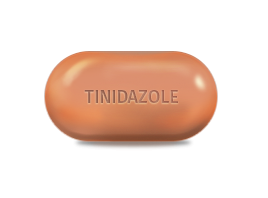
Tinidazole is used for treating certain parasitic and bacterial infections. Tinidazole is an antiprotozoal and antibiotic. It works by killing sensitive parasites and bacteria.

Trimox is used to treat many different types of infections caused by bacteria, such as ear infections, bladder infections, pneumonia, gonorrhea, and E. coli or salmonella infection.
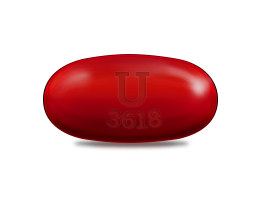
Vantin is used for treating mild to moderate infections caused by certain bacteria. Vantin is a cephalosporin antibiotic.

Zithromax is used to treat many different types of infections caused by bacteria, such as respiratory infections, skin infections, ear infections, and sexually transmitted diseases.
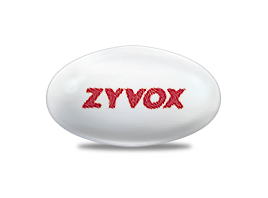
Zyvox is used to treat different types of bacterial infections, such pneumonia, skin infections, and infections that are resistant to other antibiotics.
Antibiotic
Antibiotics are an important part of modern pharmacology. Without them, humanity would still be exposed to mass epidemics. However, these drugs should be treated with caution and used only on prescription.
What are Antibiotics?
Antibiotic - a substance of microbial, animal or plant origin, capable of suppressing the growth of certain microorganisms or causing their death. Some antibiotics have a strong inhibitory effect on the growth and reproduction of bacteria and thus little or no damage to human cells, and therefore are used as medicines.
What are Antibiotics Treating?
Some antibiotics are used as anticancer drugs in the treatment of cancer. Antibiotics usually do not affect viruses and are therefore useless in treating diseases caused by viruses (e.g. influenza, hepatitis a, B, C, chickenpox, herpes, rubella, measles). However, a number of antibiotics, primarily tetracyclines, also act on large viruses.
Here is a list of the most common diseases that are treated with antibiotics:
- Acute pyelonephritis;
- Acute bronchitis;
- Sore throat or acute pharyngitis;
- Purulent inflammation;
- Meningitis;
- Acute cholecystitis, pancreatitis;
- Tuberculosis;
- Sexual infection;
- Acute cystitis.
Remember: the use of antibiotics is permissible only if there are indications, and attempts to treat viral infections with antibiotics not only will not help, but can seriously harm.
How was the Antibiotic Discovered?
In 1928, Alexander Fleming spent an ordinary experiment in the study of pathogenic bacteria. Growing a colony of staphylococci, he found that some of them are infected with ordinary mold Penicillium, which grows on stale bread, making it green. There was an area around each mold colony that had no bacteria. Fleming concluded that the mold produces a substance that kills bacteria, which he called "penicillin". This was the first modern antibiotic.
What are Antibiotics?
Specialists use different complex classifications of antibiotics. It is important for the consumer to know that there are drugs for local use, in tablets and for injections. Usually injection forms are used in more severe cases, while tablets are more widely used. By the nature of the impact on the bacterial cell antibiotics can be divided into two groups: bacteriostatic (bacteria remain alive, but unable to reproduce) and bactericidal (bacteria die and are excreted from the body).
Can I Choose my own Treatment?
What antibiotics will help you, will determine only the doctor and only after you pass the necessary examination. Antibiotics are drugs that should not be prescribed to yourself at all, especially when it comes to injections. To diagnose, calculate the required dose, the frequency of admission (administration) and the duration of treatment can only be a doctor.
Sometimes doctors prescribe antibiotics before the results of all examinations – this is normal, a common international practice. Such appointments are based on a clinical examination of the patient and a minimum of rapid diagnostic methods, so as not to miss the treatment time. Sometimes, after receiving all the tests, the doctor may decide to replace the antibiotic. By the way, the effectiveness of the antibiotic is estimated only with the proper use of the drug for three days.
What can Antibiotics do?
Improper selection of the drug or its improper use can aggravate the course of the disease: pathogenic flora will become more stable, the body will weaken, immunity will decrease, and another can join the parasitic infection. Among other things, with the wrong dosage and use of antibiotics can cause pathological processes in the body.
This such unpleasant consequences, as:
- Allergic reaction;
- Violation of the gastrointestinal tract;
- Violation of the liver and kidneys (for people with existing pathology of these organs, the selection of the type of antibiotic and its dose should be made only by a specialist, because the wrong appointment in this case can lead to very serious consequences-up to a lethal outcome);
- Exacerbation of other chronic pathology;
- When using certain groups of antibiotics – hearing loss, vision loss.
Attention: almost half of the counterfeit drugs on the post-Soviet market are antibiotics. Therefore, it is with this type of drugs you need to be extremely careful. It is important to remember the quality standards.
What to do if the Medicine does not Help, or there were Unexpected Side Effects?
You should immediately contact your doctor to adjust the pharmacotherapy and dosing of the drug. There is a pharmacovigilance service that collects and analyzes data on adverse events in the body associated with the use of drugs. This information pharmacovigilance receives from a variety of sources, but most often – from doctors.
Sample: a Relic of the Past or a Necessity?
There is a certain percentage of people who are allergic to a particular drug. And the amount of substance in the body, nothing depends. That is, if you are allergic to penicillin, it does not matter whether you got a tenth of a milligram under your skin or in a vein introduced the entire dose – the reaction will be equally severe. In this regard, in normal practice, the samples have been officially canceled for several years.
Addiction to a Particular Drug: Myth or Reality?
Bacteria in the body of some people can become resistant to certain antibiotics, sometimes even to several of their species. A very important cause of resistance is uncontrolled and frequent use of antibiotics, especially in the absence of indications. This is another of the risks that self-medication carries. And the argument that a person can get used to antibiotics, and it will not help the "weaker drug" – myth. The causative agents of acute infections are different microbes with different spectrum of resistance.
How to do Without Antibiotics, How can they be Replaced?
Sometimes a person absolutely can not take antibiotics (most drugs are contraindicated in pregnancy). What can replace them? Unfortunately, drugs with the action of antibiotics and it is completely harmless, had not been invented. Partly antibiotics can be replaced with decoctions of some herbs, such as leaves or root devyasila, garmala, pine buds, celandine, plantain, juniper. It is better to use ready-made fees that are sold in pharmacies, but even here it is better to first consult a doctor.
